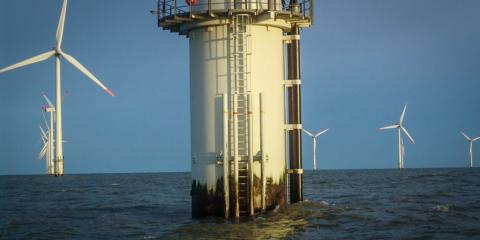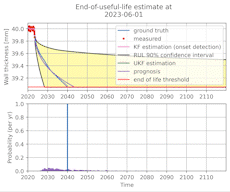Predicting rust development at offshore wind turbines

Wind turbines today are placed far out to sea and operate in harsh conditions. Clearly, manual inspections are difficult, so we are seeing an increasing demand for condition-based remote maintenance for wind turbines.
In the European project WATEREYE, we focus on rusting. Because rusting, due to the constantly splashing salt seawater, is a major reason why wind turbines fail at sea. To map this, we have developed algorithms that measure wall thickness via ultrasound. This allows us to:
- Check whether there is rusting (and thus the coating layer no longer offers full protection here) and;
- Estimate the remaining service life.
Algorithms with Bayesian filtering
The algorithms use a technique called Bayesian filtering. Instead of purely data-driven techniques where measurements serve as input without using domain knowledge, Bayesian filtering combines measurement data with a model for rust development over time. Such rust development models have been published in the scientific literature.
It works as follows: Every time a measurement of wall thickness is taken at a given location, this measurement is compared with the wall thickness that the model considers most likely for that moment and given the previous measurements. The more the measurement deviates from the model's wall thickness, the more the model adjusts (more precisely, the more the free parameters are adjusted). This keeps the model up-to-date.
Thanks to the model, we not only have an estimate of the current wall thickness, but we can also extrapolate to the future with which we can estimate the remaining lifetime of the wind turbine. Bayesian filtering even allows us to determine an uncertainty interval.
Below is a video of the remaining-life estimates generated by our algorithms over the full lifetime of a wind turbine tower. We see above the estimates of wall thickness over time and the (simulated) measurements that served as input, and below we see the remaining-life estimate as a probability distribution over the years. The (unknown) true wall thickness is also shown for reference.
